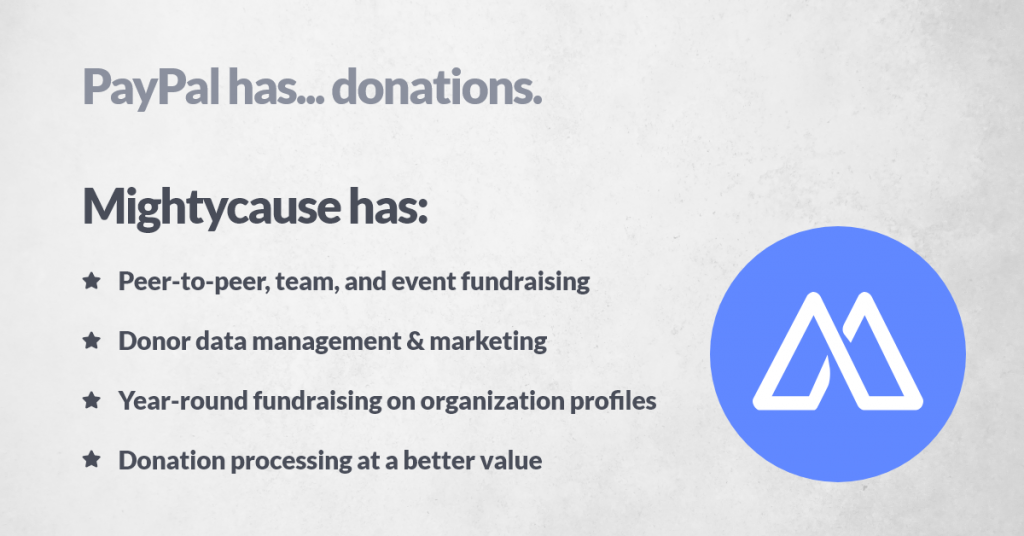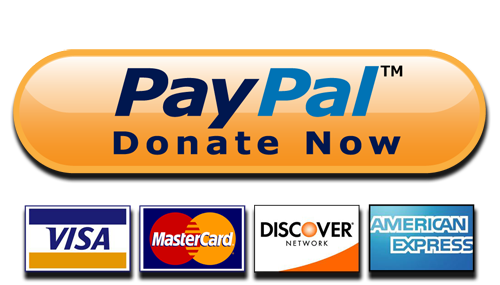Paypal Donate Button Funny Paypal Donate
A PayPal donate button can feel like a quick win for new nonprofits. When you're putting together your nonprofit's website, you need some way for people to donate. PayPal seems easy: You just grab some code and slap it on your site. And, voila! People can donate! You can cross another item off your list. Seems like the perfect solution, right?
Unfortunately, there are some distinct downsides to the PayPal donate button. And the ease and ubiquity of this popular tool has some trade-offs your nonprofit may not even be aware of. In this post, Mightycause is digging into the reality of using the PayPal donate button… and what it means for your donors.
1. The PayPal donate button is a single-use tool.
We won't beat around the bush: The PayPal donate button does one thing and one thing only. It processes transactions. And that may be enough in the beginning. But like a strawberry huller or egg yolk separator cluttering up your kitchen drawers, you will probably soon discover that the utility of this single-use tool is very limited.

Beyond donation processing
So, obviously, the financial transaction is an important part of the donation process. But it's not the only part of the process. It's important that your nonprofit has a secure, reliable way to process transactions. And in that regard, PayPal is simply competent. But here's what it doesn't do:
- Provide tax receipts to donors
- Track your donors
- Manage your donors
- Allow you to customize the checkout process
- Provide an automated thank-you email from your nonprofit
- Allow you to access and use any fundraising tools
For nonprofits, a donation is a beginning, not the end result. It's the beginning of a relationship with a donor. Through stewarding this donor and nurturing the relationship, you can build lasting support for your work. But the PayPal donate button simply does not provide any assistance with that. They process donations and nothing more.
Learn More
2. PayPal takes users off your website.
So, when someone is on your website, the goal is tokeep them there. You want to keep users engaged in your content. There's a whole science behind keeping users on a website. And when you use the PayPal donate button, here's what it does: it takes them off your website to complete their donation.
If you want to keep userson your website, there's a fee for that. You can to upgrade from a free basic account to PayPal Payments Pro to keep donors from leaving your website — which requires that you pay a monthly fee in addition to their standard transaction fee.

It's a jarring, disorienting experience for the donor. And a bad experience donating can make people hesitant to come back and give again.
3. You don't own your donor data.
This is a big issue with PayPal and something that doesn't get talked about often enough in the nonprofit world. As the saying goes, "If you're not paying for it, you're the product." In the case of PayPal,your donors are the product.
Understanding the Terms of Use
When was the last time your nonprofit read PayPal's User Agreement? What about their Privacy Statement? If you're like most people, you probably breezed right past that and agreed to the terms without doing any digging at all. So, we've pulled out a few key parts of their User Agreement:
- They're sharing your donors' personal information: "PayPal may provide aggregated statistical data to third-parties, including other businesses and members of the public, about how, when, and why Users visit our Sites and use our Services." They can also share your donors' information with "other members of the PayPal corporate family," with companies that provide services to them, with credit reporting and collections agencies and more. (PayPal Privacy Statement, Do We Share Personal Data?)
- They leverage your donors' data to help third parties advertise to them: "We work with partners and third-party service providers to serve you advertising using ad-related cookies and web beacons." Users can opt out of this if they choose (and know to opt out of it), but like many of us, donors often have no idea that they have agreed to have their personal information used in this way by agreeing to use a service. (PayPal Privacy Statement, What Privacy Choices Are Available to You?)
- Logging in with a social media platform gives PayPal access to your donors' friends and contacts: If you choose to connect your contact list information on your device with your Account and/or establish an account connection between a social media platform and your Account, we will collect and use your contact list or friend list information to improve your experience when you use the Services." (PayPal Privacy Statement, What Personal Data Do We Collect?) What that means is that if a donor logs into PayPal with their Facebook account, PayPal has the right to see that donors' friends on that platform.
And there's so much more. Read their full User Agreement and Privacy Statement for the full picture. When you put a PayPal donate button on your site, you're asking all of your donors to agree to these terms. Are you comfortable with them? And do your donors know whatthey are agreeing to when they make a donation?
The true cost of a PayPal donate button
The average donor is not an expert on internet privacy and security. But people are starting to pay more attention to this issue. And since building donor trust is paramount to retaining those donors long-term, putting their data and personal information out there with a PayPal donate button can erode that trust.
The question is, what's worth more? A low-cost, easy option for collecting donations on your website, or the trust of your donors? And what if we told you this was a choice you don't even have to make with Mightycause?
Our Pricing
4. Want to customize your donate button? Too bad!
It's important that your website reflects your nonprofit's brand. But, the PayPal Donate button has a distinct look, and it's not one you're allowed to change.

You can't customize your PayPal donate button, have it blend into your website, or not look like a jarring orange button. It is what it is. And this tied into the fact that when your donors click the PayPal button on your website, they becomePayPal's customers. You can't change the look of your PayPal donate button because PayPal has found the perfect scenario:Your nonprofit is paying them to send them customers, further their brand, and basically advertise for free on the website you've built and pay to maintain.
Mightycause's options
Just as Mightycause believes thatyour nonprofit deserves full control of your donor data, we also believe you deserve to control your own branding. So, when you use Mightycause's donation tools, you can customize it to suit your nonprofit's brand.

With our widget, you can not only add your own suggested donation amounts and descriptions that allow you to incorporate your nonprofit's campaign messaging into the checkout process, you can add your own branding to the widget. The Mightycause brand is in the background, not at the forefront.
And with a subscription to Mightycause Advanced, you can also create a full custom donation page that allows you evenmore control over the look of your page.
5. The PayPal donate button adds administrative burden
A lot of small nonprofits add a PayPal donate button on their sites because it seems like a quick, easy option. When your donor base is small enough to manage on a spreadsheet, you may not realize how quickly that becomes an untenable administrative burden. PayPal is not designed to support your nonprofit as you grow and gain more donors. And in fact, tracking donors can quickly spiral into being an unsustainable, time-consuming, manual mess.
What Mightycause provides
Mightycause was built for nonprofits, by people who understood what nonprofits need in order to function. And we're continually increasing the number of tools we offer to support nonprofits and help them grow. Here's what we offer:
- Comprehensive donation reports
- Donor retention reports
- Offline donation tracking
- Recurring donation reports
- Advanced analytics (for Advanced subscribers)
And that's all in addition to our fundraising tools like peer-to-peer fundraising, teams and events that will help you engage new donors in your cause. We also issue tax receipts to donors, allow you to create custom thank-you pages, and automate thank-you emails to donors.
Ditch the PayPal donate button. Sign up for Mightycause for better value, lower fees, and more fundraising tools to support your growing nonprofit.
GET STARTED
Source: https://blog.mightycause.com/paypal-donate-button/
0 Response to "Paypal Donate Button Funny Paypal Donate"
Post a Comment